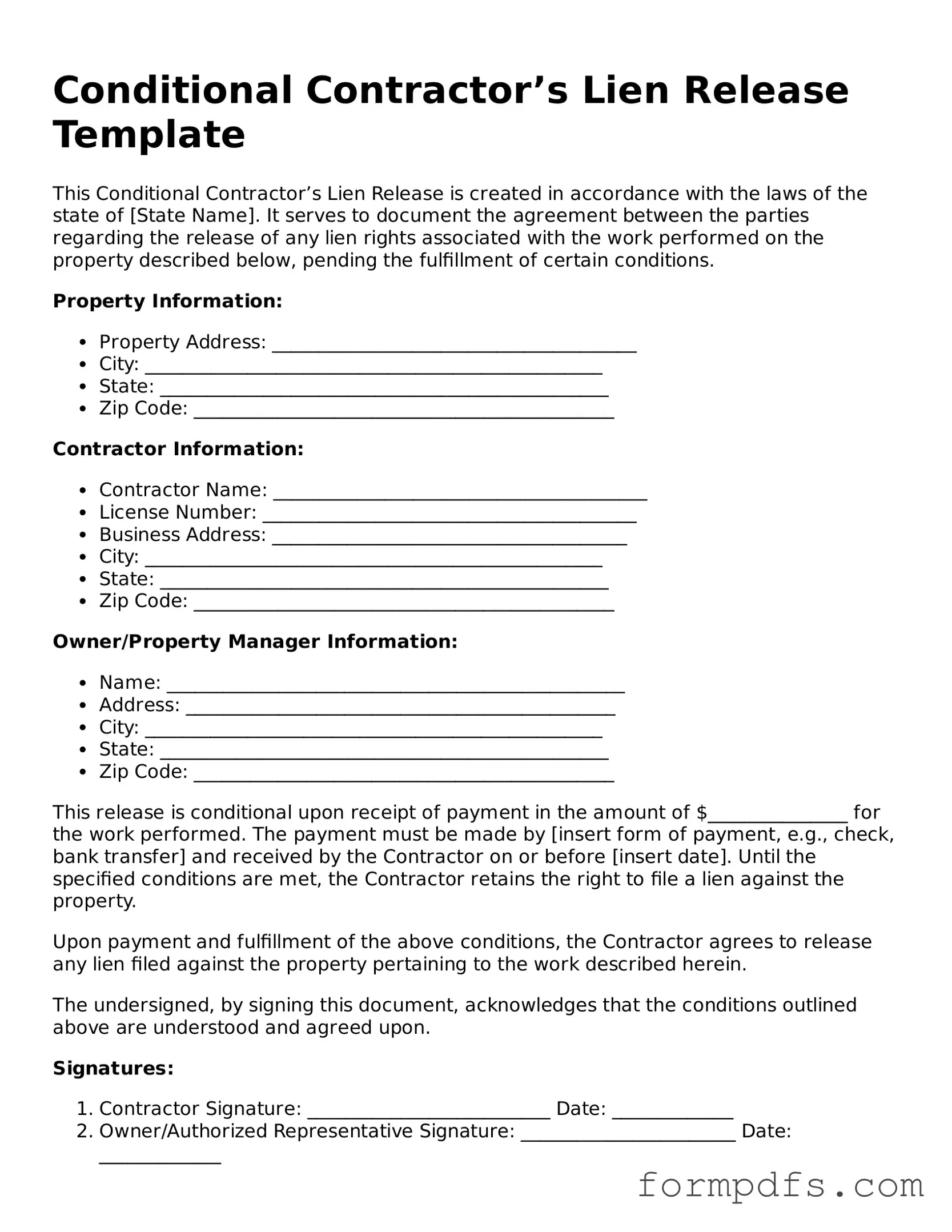What is a Conditional Contractor’s Lien Release form?
A Conditional Contractor’s Lien Release form is a legal document used in the construction industry. It allows a contractor, subcontractor, or supplier to release their claim against a property for unpaid work or materials, but only under certain conditions. Typically, the release is contingent upon the receipt of payment. This form protects property owners by ensuring that they will not face a lien on their property if they pay the contractor or supplier as agreed.
When should I use a Conditional Contractor’s Lien Release form?
This form should be used when a contractor or subcontractor is about to receive payment for work completed or materials supplied. It is particularly useful when the payment is not yet received but is expected. By using this form, the contractor can assure the property owner that once payment is made, they will not place a lien on the property.
What are the benefits of using a Conditional Contractor’s Lien Release form?
Using this form provides clarity and security for both parties involved. For the contractor, it ensures that they will not file a lien as long as payment is made. For the property owner, it minimizes the risk of having a lien placed on their property, which can complicate future transactions or sales. This form also serves as a record of the transaction, detailing the work performed and the agreed payment.
Is a Conditional Contractor’s Lien Release form legally binding?
Yes, this form is legally binding as long as it is properly executed and meets the requirements of state law. Both parties should sign the document, and it is advisable to keep a copy for their records. However, it is important to understand that the release is conditional, meaning that if payment is not made, the contractor retains the right to file a lien.
Can I revoke a Conditional Contractor’s Lien Release form?
Once a Conditional Contractor’s Lien Release form is signed and delivered, it cannot be revoked unilaterally. If the payment condition is not fulfilled, the contractor may still pursue their lien rights. It is crucial for both parties to communicate clearly regarding payment to avoid misunderstandings or disputes.
How do I ensure that the Conditional Contractor’s Lien Release form is filled out correctly?
To ensure the form is filled out correctly, both parties should review the document carefully before signing. Include specific details such as the names of the parties involved, a description of the work performed, the amount due, and the payment conditions. Consulting with a legal professional can also help ensure compliance with state laws and regulations.
